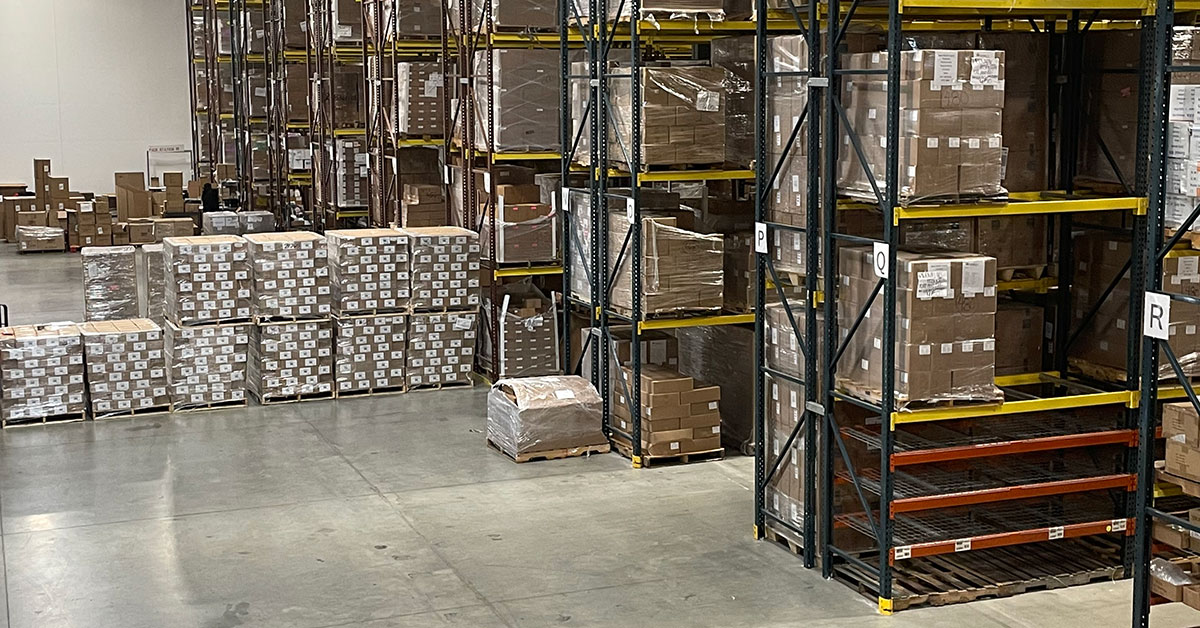
What is Omnichannel Distribution and Why Does It Matter?
With the e-commerce market growing by leaps and bounds, it has forced retailers to take a hard look at their distribution practices to ensure they are meeting customer demands. Because of the increased demand and need for improved customer experiences, omnichannel distribution became born.
Unfortunately, not all retailers understand omnichannel distribution fully. The boundaries between distribution centers and retailers have become less distinct, with stores now being asked to perform fulfillment duties once reserved for warehouses.
Logistics is now seeing greater pressure than ever before because of the considerable growth of multichannel. With retail cross-channel fulfillment, customer expectation has risen exponentially. Along with these increased demands, have come rising pressure and costs regarding logistics and transportation.
So, how does omnichannel distribution help retailers meet these staunch demands? By learning what omnichannel is and why it matters, retailers may rise to the challenges they now face because of consumer demand.
What Is Omnichannel Distribution?
In its simplest of terms, omnichannel distribution is the bridge between retail operations and the physical flow of products. Omnichannel helps produce a seamless experience for customers across the board.
With omnichannel, customers can easily complete their purchases and receive their goods through the channel of their choosing. Omnichannel distribution circumscribes the delivery of goods and services to customers and also covers the return of unwanted products. Before delving further into omnichannel, individuals must understand the types of distribution.
Forward Distribution
This system is made up of its dispatching locations and points of reception. When creating a forward distribution system, retailers must consider both the sources and destinations. Retailers must also choose carefully from the possible delivery processes and procedures.
Backward Distribution
A backward distribution system contains the framework of how products are returned and where. This system envelopes the shipment process from customer to store.
Why Does Omnichannel Distribution Matter So Much to Retailers?
Consumers are savvier than ever before regarding shopping. They want to explore multiple channels for a retailer, to ensure they learn as much as possible about their options and are getting the best price available.
Retailers should realize the reasons omnichannel is so essential for their businesses. The following proves why every retailer needs omnichannel distribution solutions.
The Improved Service of Customers
Consumers want and expect seamless experiences like never before. With omnichannel distribution, consumers will obtain the following benefits.
- Individuals can customize their delivery options with ease.
- Customers will find they can access a store’s inventory without hassle.
- Consumers discover they have multiple methods of checking items before they purchase.
- Individuals feel much safer and more secure in making purchases online.
The Eradication of Shipping Issues
One of the most common reasons consumers stop buying from a retailer is shipping complaints. Because most consumers want their ordered products yesterday, retailers must do everything possible to streamline the shipping process to avoid unnecessary delays.
Omnichannel distribution allows all of a retailer’s channels and locations to be integrated fully. No matter where customers live, retailers can ship their products in the fastest time possible.
With omnichannel distribution, retailers will save themselves money and their customers time. Omnichannel presents a win/win for retailers and the consumers they serve.
The Increase in Profits
Using omnichannel distribution means the opportunity to expand the offerings to customers. Expanding a business to multiple channels increases sales opportunities. Increased sales mean greater profits.
When retailers couple revenue increases with cost decreases, profits skyrocket. Because omnichannel distribution seeks to transfer and deliver products in the shortest distance possible, customers remain satisfied, and retailers do not lose out to other more efficient competitors.
Not All Omnichannel Distribution Solutions Are the Same
One of the biggest challenges of omnichannel distribution is finding a solution that works for the needs of a retailer. Retailers can only overcome the following challenges by careful research and finding the right solution.
- Retailers must find an omnichannel solution that allows them to view global inventory. A retailer must see the inventory on-hand and products that are in transit. Retailers will never reach success using omnichannel distribution with inventory visibility concerns.
- Omnichannel distribution solutions must allow for flexible fulfillment logic so the needs of customers remain satisfied. With the right solution, retailers can fine-tune their fulfillment rules as necessary.
- Retailers must also ensure their chosen solution handles reverse logistics effectively. Customers must find it just as seamless to send unwanted orders back as they do purchase.
Steps For Implementing an Omnichannel Distribution Strategy
Retailers that want to better serve their customers and ultimately see improved profits need to know the steps for implementing an omnichannel strategy. Consider the following.
- Get to know the needs of the customer base.
- Choose the right channels for customer appeal.
- Create an obvious purpose for every channel.
- Connect all the channels with the right solution.
- Maintain all the channels efficiently and effectively.
Choosing the Right Omnichannel Solution Does Not Have to Be a Headache
Implementing omnichannel distribution becomes challenging, but it does not have to be overwhelming. Choosing the right company is essential for implementing a solution successfully.
A company that has an already established e-commerce platform will assist retailers in adopting a strong omnichannel distribution foundation. Once retailers implement omnichannel distribution, they can improve the experience of their customers in many ways, including the following.
- Retailers will supply their customers with a seamless checkout experience that is easy and satisfying for everyone. Optimizing the checkout experience helps with customer retention.
- Customers who use omnichannel distribution retailers have multiple options for purchasing products. A higher level of flexibility improves customer satisfaction immensely.
- Order fulfillment options increase exponentially, allowing retailers to better serve the needs of their customers and ensure loyalty.
Besides choosing the right omnichannel distribution solution, retailers must make sure they also choose the best technology. The inventory management and order management systems, along with all software, should work seamlessly with the omnichannel distribution partner. Working with the right company and ensuring they establish a well-integrated system will help retailers rise to the increasing challenges of e-commerce.
